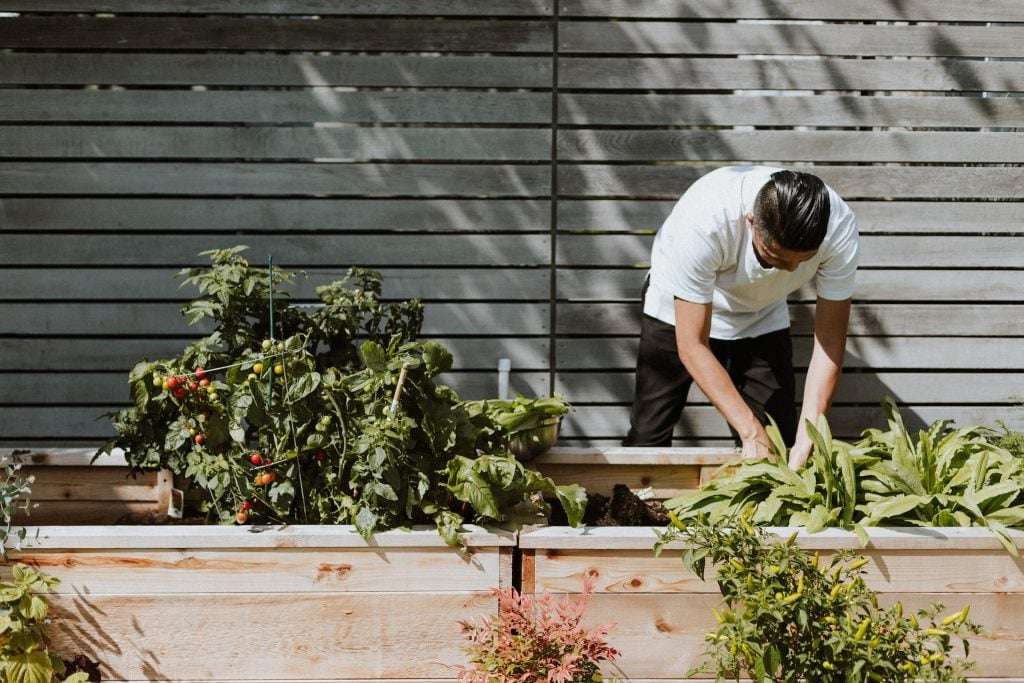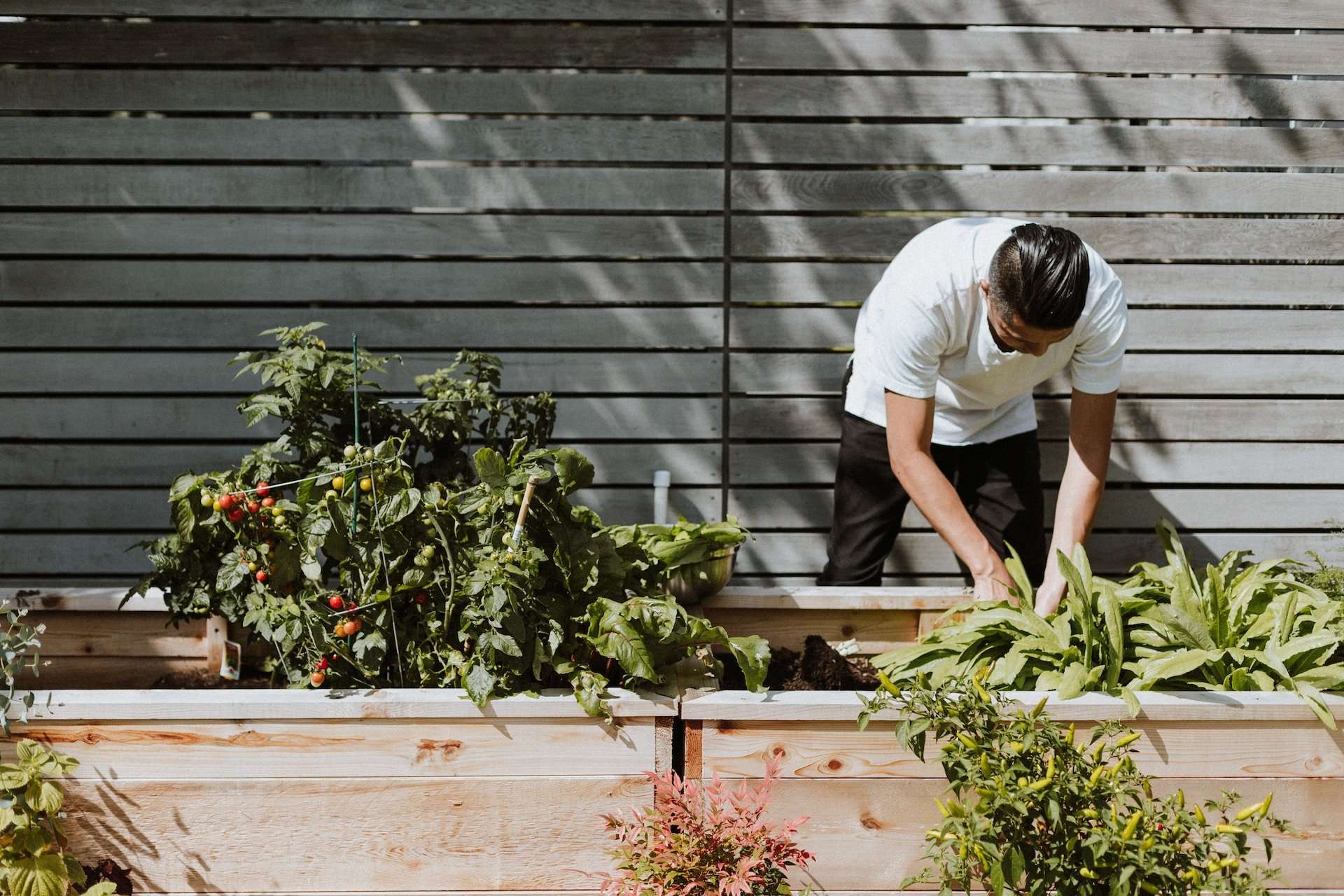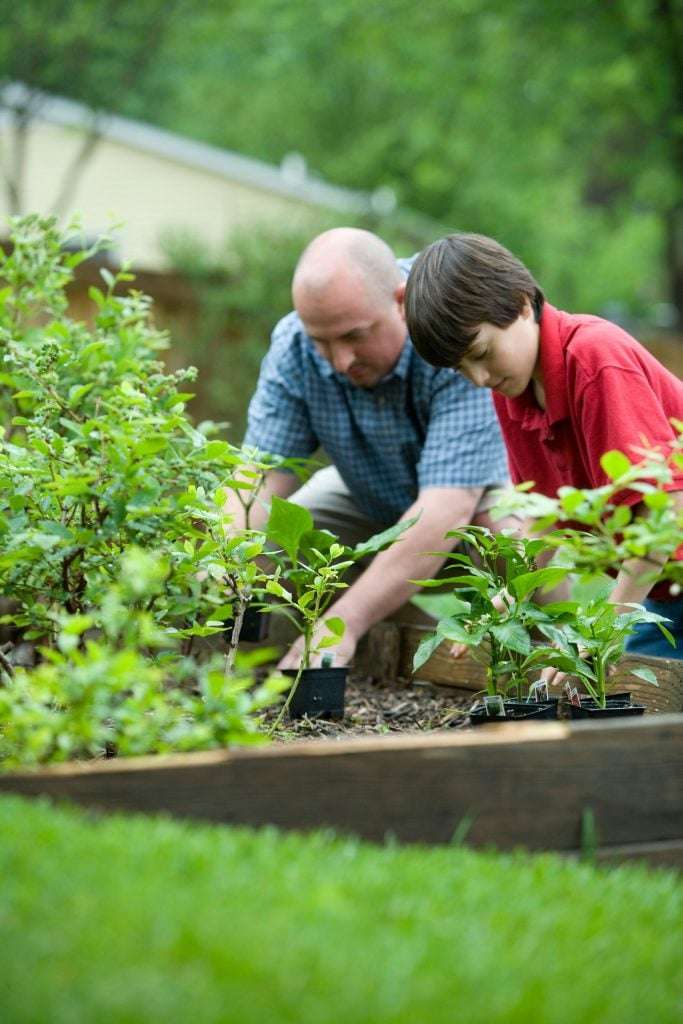
Most of the work involved in creating a self-sustaining garden gets done during the planning phase. When you put more thought into the set-up of your garden, you’ll reduce the amount of care and maintenance required to keep it going.
How to Create Your Own Self-Sustaining Garden
If you’re new to gardening or you’re unsure how to make it self-sufficient, these seven tips can help you get started:
1. Choose a Great Location
Sometimes, creating a self-sustaining garden can feel a bit like going into real estate. As with choosing properties, location, location, location is key for planning a garden. There are several factors that go into choosing the placement for your self-sustaining garden.
Your garden will need a minimum of six hours of sunlight, so set aside a patch of land farther out on your property. Keep in mind that too much shade can be a garden’s mortal enemy. The sun’s rays will help replenish the nutrients in the soil as well as provide your plants with the UV rays they need to thrive.
Pro Tip: If you plan to build your own garden shed, try not to place it where it will interfere with sunlight access. Having to walk a few extra feet will be worth it if it means keeping shade from inhibiting your garden’s growth.
2. Choose Self-Sufficient Plants for Your Garden
When creating a garden that will become self-sustaining, you’ll want to choose plants that are indigenous to your region. Alternatively, look for plants that grow easily in any environment. If you already have fruit trees or plants growing on your property, you can use a biophilic design to incorporate them into your garden.
Here are a few plants that grow easily in most environments:
- Potatoes
- Winter squash
- Carrots
- Cabbage
- Onions
- Garlic
- Tomatoes
- Beets
You’ll also find that beans are easy to grow, but they do yield smaller amounts when compared to the space needed to grow them. You can harvest almost three pounds of beans for every 100 square feet of land. Dry your beans and store them for up to 12 months.
3. Use Compost Instead of Fertilizer
Even when you intend to grow self-sufficient plants, the condition of your soil will determine how well your plants thrive. Over time, soil loses moisture and essential nutrients. While fertilizer replenishes those nutrients, it can also add chemical compounds to the soil.
A better alternative is to use natural compost for your garden. You can do this by incorporating sustainable design tips inside your home, like adding a compost bin.
Collect trimmings from fruits and vegetables, and use this type of waste along with leaves from the trees and plants on your property to make a natural compost.
Just starting your garden? Here are a few tips for beginners:
5 TIPS For BEGINNER Food Gardeners to Grow Veggies at Home
4. Collect Rainwater for Your Garden
If you set up a system to collect and use summer rain efficiently, you’ll conserve water while making sure your garden gets sufficient moisture. Use barrels to collect rainwater from your roof and a system of spouts to direct the water to your garden. Since this water isn’t chlorinated, it’s healthier for your plants.
Pro Tip: You may still need to water your self-sustaining garden during periods of hot temperatures or drought. Water your plants early in the morning or in the evening after the sun sets to reduce the chances that the water will evaporate before it gets absorbed by the plant roots.
5. Practice Successive Sowing
Using the practice of successive sowing or planting will help you extend the period during which you can harvest fresh foods. A self-sufficient garden should provide you with a steady flow of crops for your household’s use. Plant one type of crop every two weeks to stagger the growth of these plants throughout the harvesting weeks.
For example, you’ll plant potatoes one week and wait up to 14 days before planting cabbage. This gives you a steady supply of “feast or famine crops” over the course of several weeks or months.
6. Save Your Seeds
As you use foods from your garden, collect the seeds from those foods to plant in your garden. This is an essential step in evolving your self-sustaining garden since it gives you a steady supply of new seeds that you won’t have to buy from another source. Collect seeds from tomatoes, squash, melons, and other foods.
Pro Tip: Making sure you have enough space for your garden is relatively simple. You’ll need approximately 200 square feet of gardening space to grow enough food for each person in the household. If there are three people in your household, you’ll need 600 square feet of land for your garden. Saving seeds benefits gardens of any size.
7. Recycle Your Plastic Containers
While self-sufficient gardening involves growing foods that you can regrow season after season, it also means using resources that you find convenient or freely available. One way to do this is to repurpose your plastic containers by using them to grow plants.
Cut plastic containers, such as milk jugs and detergent containers, to use as planters. You can plant seedlings in these containers and hang them from a clothesline over your garden. As the seedlings grow, transplant them to the soil.
You can also use old containers in place of watering cans. Simply poke a series of holes in the top of the container and fill it with water. This makes it easier to spread water out over a larger area as your garden grows.
Creating a Self-Sustaining Garden Is Simple and Affordable
You may think that creating a self-sustaining garden requires Herculean effort and a healthy amount of financial investment. But by following these seven simple tips, you can create your own self-sustaining garden that will give back to you for years to come.
About the Author
Sarah’s love for home design and renovation runs as deep as her love for a good dad joke! 😄 She’s been crafting content with the fantastic folks at Ambient Building Products for years, and when it comes to homes, this gal is the real deal.
From DIY adventures to pro collaborations, she’s worn all the hats, and not just because she’s a fan of stylish headgear. In her own abode, she’s overseen her fair share of projects, making her a true home improvement aficionado.
But what really makes her heart skip a beat are those eco-friendly, energy-efficient upgrades that not only make your house look good but also feel good. Sarah’s all about adding value to your home, one pun and one project at a time! 💚💡


